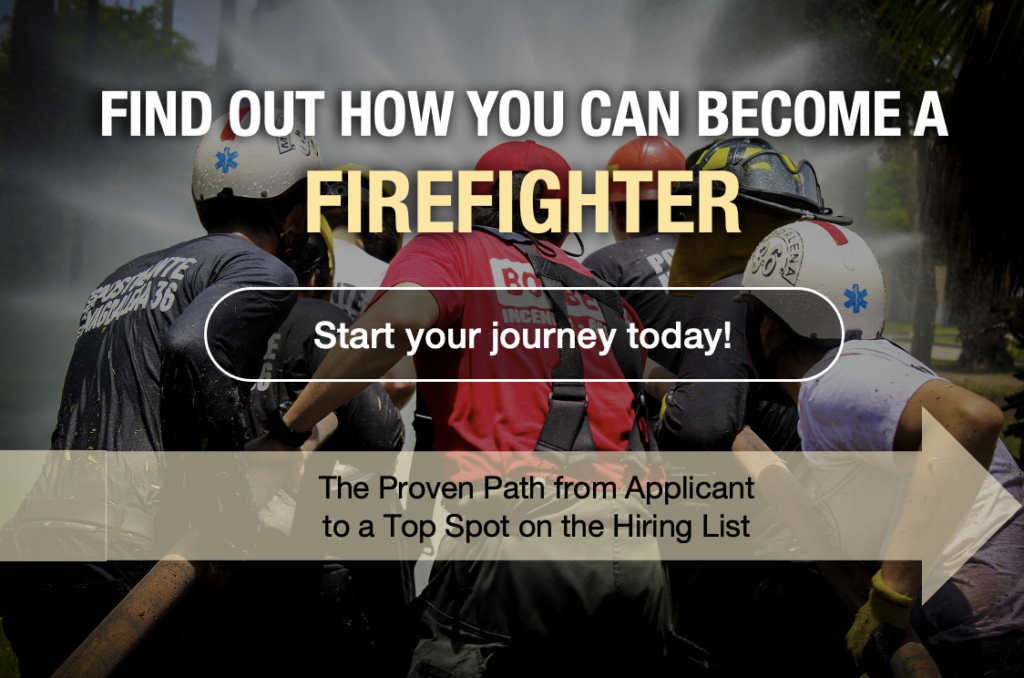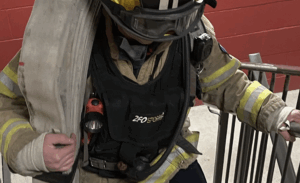If you’re aiming to ace your firefighter stair climb test, you’ve come to the right place.
The stair climb is one of the most demanding events in the firefighter Physical Ability Test (PAT), and excelling here not only boosts your overall score—it proves you have the endurance, strength, and mental toughness needed on the fireground.
Below, you’ll find everything you need to know to train specifically for the firefighter stair climb test, from movement mechanics to sample workouts, common mistakes, and pro tips.
What Is the Firefighter Stair Climb Test?
The firefighter stair climb test simulates climbing a five-story stairwell while wearing a 75-pound (or department-specific) SCBA pack. Key elements include:
- Continuous Climb: No rest between floors; you must maintain a steady pace.
- Scoring Standard: Often 3 minutes, 20 seconds (200 seconds) or faster for a timed completion.
- Equipment: Weighted vest or SCBA pack, proper footwear, and a designated stair tower (or machine).
This event measures cardiovascular endurance, lower-body strength, and mental grit under load.
Gear Up to Excel in Your Firefighter Physical Ability Test
Aspiring firefighters, here’s some valuable advice: when preparing for the firefighter Physical Ability Test, your first purchase should be a weight vest.
Why, you ask?
Every firefighter physical ability test requires you to wear one during the test. Enter the weight vest, your closest ally in replicating the real-world conditions during the test.
The right equipment can make all the difference when preparing for the Firefighter Physical Ability Test.
A weight vest is the quintessential training tool that helps you build the strength and endurance necessary for success in the test.
We’ve rounded up the Top 3 Weight Vests for the Physical Ability Test, ranked from the highest price to the lowest, along with their benefits to help you choose the one that suits your needs.
Why Specialized Stair Climb Training Matters
Many candidates neglect event-specific training, opting for general cardio. But the firefighter stair climb test demands:
- Muscular Endurance in quads, glutes, calves, and hip flexors.
- Core Stability to keep your torso upright underweight.
- Grip & Shoulder Strength to stabilize the SCBA harness.
- Breath Control to manage the heavy pack in tight stairwells.
Targeted stair-running workouts and strength sessions help you maintain form and pace, so you won’t “hit the wall” halfway up.
Mastering Your Climb: Movement Mechanics
Before you increase intensity, perfect your technique:
1. Foot Placement
- Drive through the whole foot (heel to toe) to maximize force.
- Keep feet hip-width apart to track knees over toes.
2. Torso Alignment
- Maintain a slight forward lean (10–15°) from the ankles, not the waist.
- Brace your core to prevent excessive rounding under weight.
3. Arm Drive
- Use a controlled arm swing to counterbalance leg drive.
- Keep elbows at ~90°—avoid flaring out wide.
4. Breathing Pattern
- Inhale for two steps, exhale for two steps (2:2 ratio).
- Practice nasal breathing to optimize oxygen delivery.
Sample 8-Week Stair Climb Training Plan
Stair Workout (2×/week)
Strength & Conditioning (2×/week)
Week 1–2
- 5-story tower × 4 reps at an easy pace • 2-minute rest
- Goblet squats 3×12 • Plank 3×45s • Farmer’s carry 3×30s
Week 3–4
- 5-story × 5 reps @ moderate pace • 90s rest
- Bulgarian split squat 3×8/leg • Dead bugs 3×12 • Reverse lunges 3×10
Week 5–6
- 5-story × 6 reps @ target pace (200s total) • 60s rest
- Barbell back squat 4×6 • Hanging knee raise 3×10 • Hip thrust 4×8
Week 7–8
- Pyramid: 3–5–3 reps @ target pace • 60s rest
- Front squat 4×5 • Weighted plank 3×30s • Box step-ups 3×10/leg
Sample 8-Week Stair Climb Training Plan
Stair Workout (2×/week)
Strength & Conditioning (2×/week)
Week 1–2
- 5-story tower × 4 reps at an easy pace • 2-minute rest
- Goblet squats 3×12 • Plank 3×45s • Farmer’s carry 3×30s
Week 3–4
- 5-story × 5 reps @ moderate pace • 90s rest
- Bulgarian split squat 3×8/leg • Dead bugs 3×12 • Reverse lunges 3×10
Week 5–6
- 5-story × 6 reps @ target pace (200s total) • 60s rest
- Barbell back squat 4×6 • Hanging knee raise 3×10 • Hip thrust 4×8
Week 7–8
- Pyramid: 3–5–3 reps @ target pace • 60s rest
- Front squat 4×5 • Weighted plank 3×30s
- Box step-ups 3×10/leg
Notes:
- Perform stair workouts on real stairs or a StairMaster with a weighted vest.
- Always begin with a dynamic warm-up (leg swings, hip openers).
- Finish with static stretching, focusing on hip flexors, calves, and hamstrings.
Common Mistakes & How to Avoid Them
- Rushing Early: Starting too fast leads to burnout. Aim for an even split—climb each floor in roughly the same time.
- Short Stride: Chopping steps increases reps. Focus on full extension—drive through the ankle and hip.
- Slouching Under Load: Fatigue causes rounding. Engage your core and keep “proud chest” posture.
- Neglecting Grip: Heavy packs shift; practice carrying dumbbells or kettlebells to improve shoulder stability.
Nutrition & Recovery for Peak Performance
- Pre-Workout Fuel: 30–60 minutes before, eat a 2:1 carb-to-protein snack (e.g., banana & nut butter).
- Hydration: Sip water throughout the day; include electrolytes on heavy training days.
- Post-Workout: Within 30 minutes, refuel with 20–30g protein and carbs (e.g., chocolate milk or a recovery shake).
- Sleep: Aim for 7–9 hours per night to support muscle recovery and mental focus.
FAQs: Firefighter Stair Climb Test
Q: What’s a good time for the stair climb?
A: Most CPAT standards require ≤200 seconds (3:20) for a five-story climb. Always check your department’s specific benchmark.
Q: Can I train on a StairMaster?
A: Yes—set it to mimic five stories (about 75–100 steps) per minute under increasing resistance or with a weighted vest.
Q: How often should I practice?
A: Two targeted stair workouts per week, plus 1–2 lower-body strength sessions, will optimize gains without overtraining.
Ready to Crush the Firefighter Stair Climb Test?
Mastering the firefighter stair climb test is all about focused, consistent training—and mental resilience. Integrate these movement tips, sample workouts, and recovery strategies into your routine, and you’ll arrive at test day stronger, more confident, and ready to hit your target time.
For a full firefighter physical test prep regimen—including written-exam strategies, oral-interview tips, and complete physical-ability workouts—check out: Mastering the Firefighter Exam
These tools will round out your training, helping you excel not just on the stair climb, but across every portion of your firefighter assessment. Lace up your boots, strap on that pack, and start climbing toward your dream of becoming a professional firefighter!










